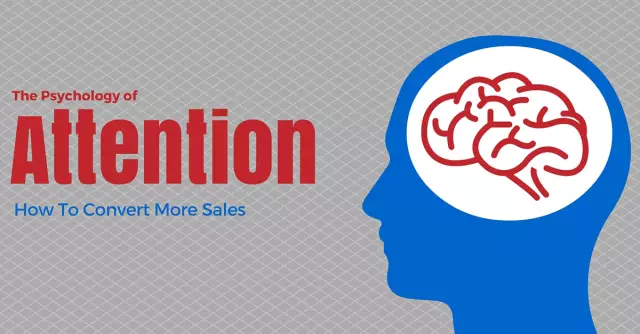- Author Miguel Ramacey [email protected].
- Public 2023-12-17 06:11.
- Last modified 2025-01-24 21:21.
One of those processes that constantly occurs in the human brain, however, regarding the essence of which and the right to independent existence, psychologists still do not agree, is attention. The definition given by the adherents of one point of view deprives this concept of any independence. In this case, it is considered by scientists only as an aspect of any other psychological activity of the individual.

Others believe that attention is a fairly independent, specific activity that takes place inside a person's consciousness. It has its own characteristics, which cannot be reduced only to the features of other cognitive processes. Supporters of this opinion also have a scientific justification for their point of view. So, they point out that in the human brain it is possible to find and isolate structures associated precisely with attention. Moreover, from those responsible for the work of other cognitive processes, they are independent both physiologically and anatomically.
Indeed, in the system of phenomena relating to psychology, human attention is in a special position. It is included in almost all ongoing processes, and at the same time, it cannot be completely isolated in order to be studied separately from them. However, there are also a number of distinguishing features thatcharacterized by attention. This is, first of all, the presence in it of such properties that can be measured and observed - volume, concentration, switchability. As well as other characteristics that are not directly related to the processes of memory, perception, thinking, sensations.

An attempt to combine existing points of view into one will help solve the problem under discussion. That is, you need to understand that attention is at the same time some facet of the psychological process and something independent, sovereign. This position is confirmed by the latest anatomical and physiological data.
It is also interesting that, despite the huge every minute flow of information, a person notices and notes far from everything. Attention singles out only a small fraction of the impressions that come from outside and the sensations that arise inside. Only a part of them is transformed into images, remembered, and then thought about. That is, attention is a process both psychological and physiological. It is a state that characterizes the specifics of cognitive activity in dynamics. This is expressed in concentration on a small area of reality (external or internal) for a certain period of time. So, attention is the process of selecting one type of information that enters the brain through all the senses, and completely ignoring any other. It can be done unconsciously, semiconsciously and consciously.

Attention of a person, as already mentioned, is characterized bycertain properties. There are only five of them.
1. Sustainability. It manifests itself in the ability to maintain attention for a long time on any object, person, activity, without being distracted by anything and without weakening it.
2. Concentration. This is the degree of focus on one thing while completely ignoring the other.
3. switchability. Manifested in the ability to transfer attention from one type of activity, object to another.
4. Volume. Measured by the amount of information that an individual is able to simultaneously keep in the sphere of attention.
5. Distribution. It consists in the ability to disperse attention, that is, to perform several actions in parallel.






